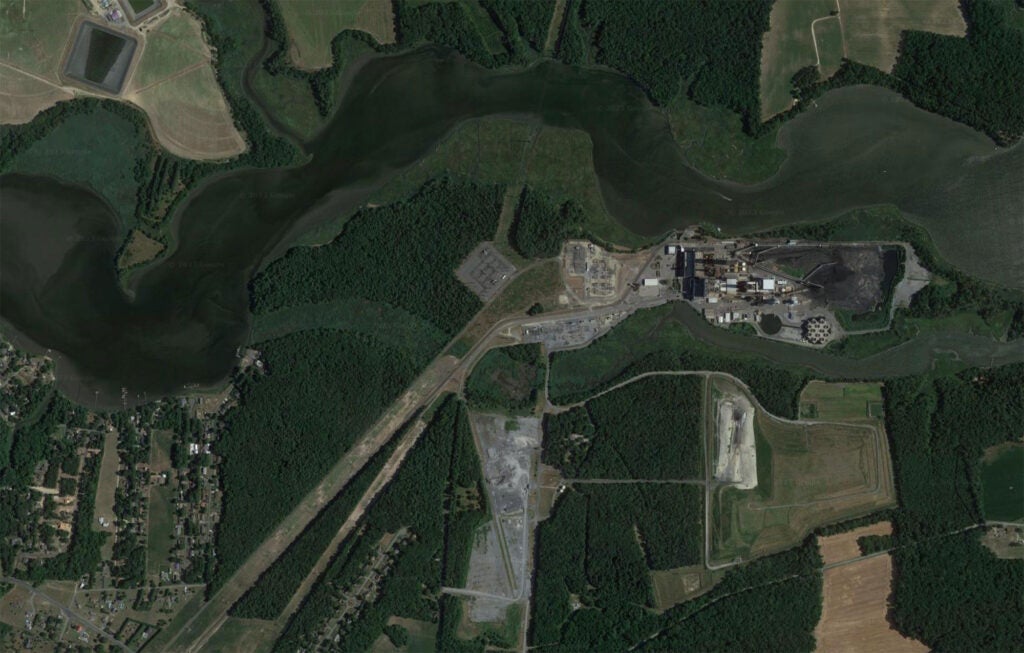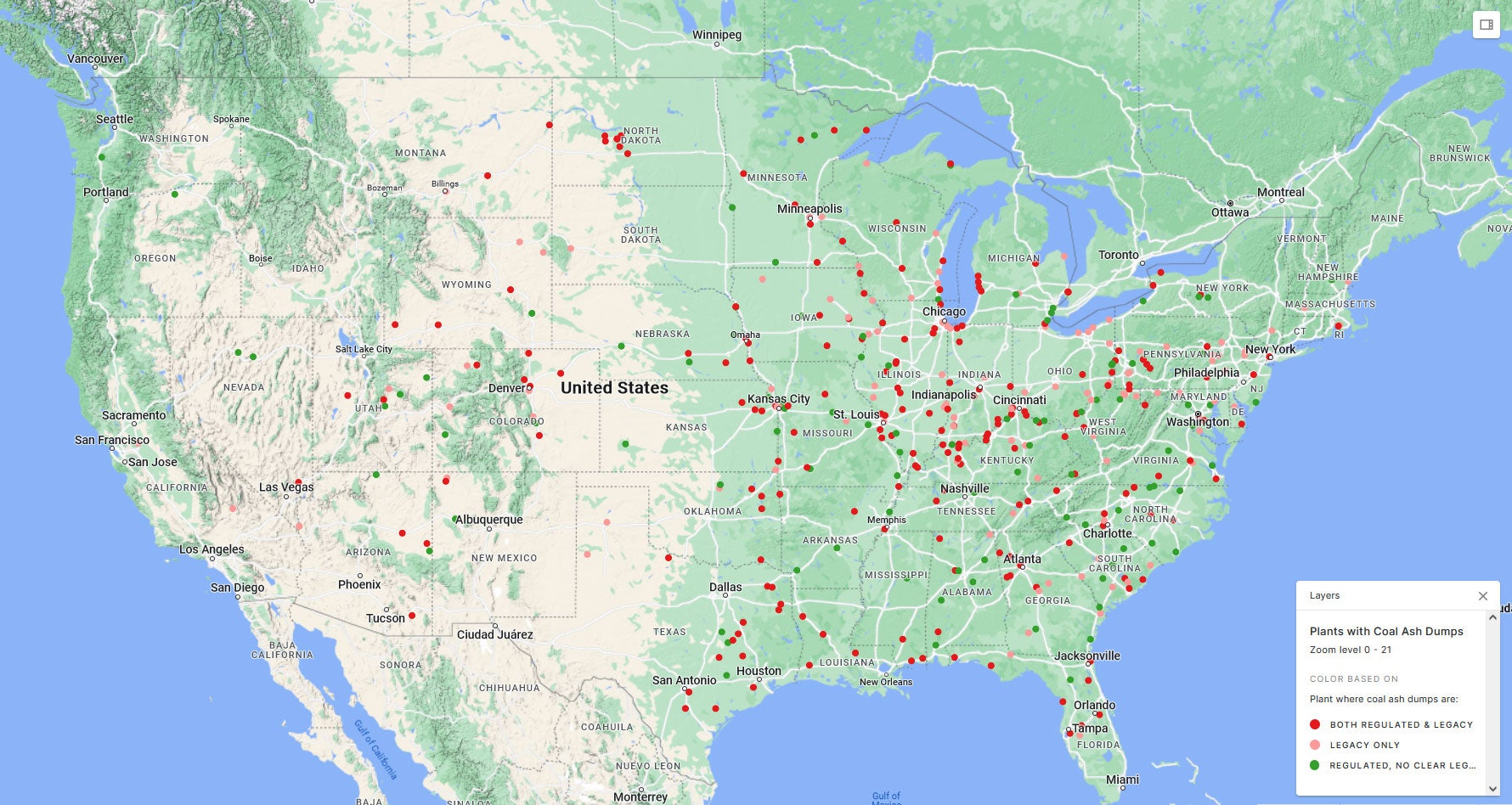May 3, 2023
Toxic Coal Ash in Delaware: Addressing Coal Plants’ Hazardous Legacy
For decades, utilities disposed of coal ash — the hazardous substance left after burning coal for energy — by dumping it in unlined ponds and landfills.
After years of litigation and grassroots activism, on Apr. 25, 2024, the EPA issued a new rule that will force power plants to finally clean up their toxic coal ash. The EPA extended federal monitoring and cleanup requirements to hundreds of previously excluded older coal ash landfills and ponds that have been leaking toxic pollution into groundwater.
Note: Coal ash dumpsites referenced as “unregulated” throughout this page now are likely subject to federal regulation under the final rulemaking.
Coal ash contains hazardous pollutants including arsenic, boron, cobalt, chromium, lead, lithium, mercury, molybdenum, radium, selenium, and other heavy metals, which have been linked to cancer, heart and thyroid disease, reproductive failure, and neurological harm. In 2023, the EPA acknowledged that coal ash is even more dangerous than previously thought, with levels of arsenic and radiation that pose cancer risks.
Industry’s own data indicate that across the country 91% of coal plants are currently polluting groundwater above federal health standards with toxic pollutants.
Despite EPA’s 2015 Coal Ash Rule, which created the first-ever safeguards for coal ash disposal, many coal ash dumps remained unregulated due to sweeping exemptions for legacy coal ash ponds and inactive landfills. The exempted coal ash dumps are sited disproportionately in low-income communities and communities of color. The EPA extended clean up requirements to hundreds of old coal ash dumps across the country when it issued new regulations in the spring of 2024.

Coal ash remains one of our nation’s largest toxic industrial waste streams. U.S. coal plants continue to produce approximately 75 million tons every year.
In 2023, the EPA acknowledged widespread noncompliance with existing coal ash regulations and ramped up enforcement after designating coal ash a national enforcement priority.
Action Needed
The magnitude of harm from recklessly dumped toxic coal ash requires decisive action from federal and state regulators.
- Utilities must be required to comply with the law and immediately clean up their pollution.
- EPA and states must act quickly to ensure that utilities leave communities with sites that benefit rather than harm their health, environment, and economic status.
- EPA must take action to prohibit the use of coal ash as construction fill and make polluters clean up areas where ash was used as fill.
One Regulated Coal Ash Disposal Site in Delaware*
In Delaware, the utility NRG operates a federally regulated coal ash landfill containing nearly 1.5 million cubic yards of toxic waste at its Indian River Generating Station.
This dump has caused significant groundwater contamination. However, NRG has yet to complete a comprehensive cleanup to restore water resources despite the legal requirement to do so.
* Energy Center Dover LLC’s Dover Plant, located in Dover, DE, operates an inactive coal ash pond at the facility according to historical reporting to EPA, but the owners have not created a CCR Rule Compliance Data and Information website nor have they complied with the CCR rule’s requirements that apply to this pond, including groundwater monitoring, closure, and corrective action.
| Indian River Generating Station | Dagsboro | NRG | 1 landfill | Beryllium (x1), Boron (x3), Cobalt (x4), Lithium (x14), Molybdenum (x6) |
All data on groundwater contamination from coal ash derived from the utilities’ publicly accessible CCR Compliance Data and Information websites, and exceedances were calculated by Environmental Integrity Project.
For more information on regulated coal ash sites in Delaware, see Mapping the Coal Ash Contamination.
Two Coal Ash Legacy Ponds and Inactive Landfills in Delaware
March 2024 Update: The table below underestimates the legacy units that may be regulated by EPA’s upcoming CCR Legacy Pond Rule. Additional legacy units at specific plants may be found in the national map, above.
In addition, NRG is responsible for at least two inactive coal ash landfills that escaped federal regulation. NRG created at least two unregulated inactive coal ash landfills at one of its facilities.
This total is likely an underestimation, but the exact number is unknown because NRG was not required to report these sites.
Evidence has already shown that coal ash has contaminated groundwater at these sites, but there are no federal monitoring or cleanup requirements.
These dumps are almost certainly contaminating water and threatening health and the environment; however, monitoring data are not currently available for most unregulated sites.
As we anticipate EPA’s proposed rule on legacy ponds and unregulated landfills in May 2023, a concern remains that the agency will not address coal ash that was dumped off site or used as fill.
| Indian River Generating Station | Dagsboro | NRG | 0 | 2 | Yes – EPA damage case |
These data were developed by using EPA datasets relied upon in their 2007 and 2014 CCR risk assessments (Human and Ecological Risk Assessment of Coal Combustion Residuals) and comparing those datasets to the universe of regulated units.
“EPA damage case” denotes a site where US EPA has found documented groundwater contamination from coal ash.
For More Information
Christine Santillana, Senior Legislative Counsel, Earthjustice, csantillana@earthjustice.org
Lisa Evans, Senior Counsel, Earthjustice, levans@earthjustice.org.
More on Coal Ash in Delaware
Coal Ash in States, Territories, Regions
Puerto Rico (En Español)
Earthjustice fights in the courts for a long-term solution to the toxic menace of coal ash. And we act on behalf of dozens of clients and over 100 coalition partners to defeat legislative attempts to subvert federally enforceable safeguards of coal ash.
Earthjustice’s Clean Energy Program uses the power of the law and the strength of partnership to accelerate the transition to 100% clean energy.
